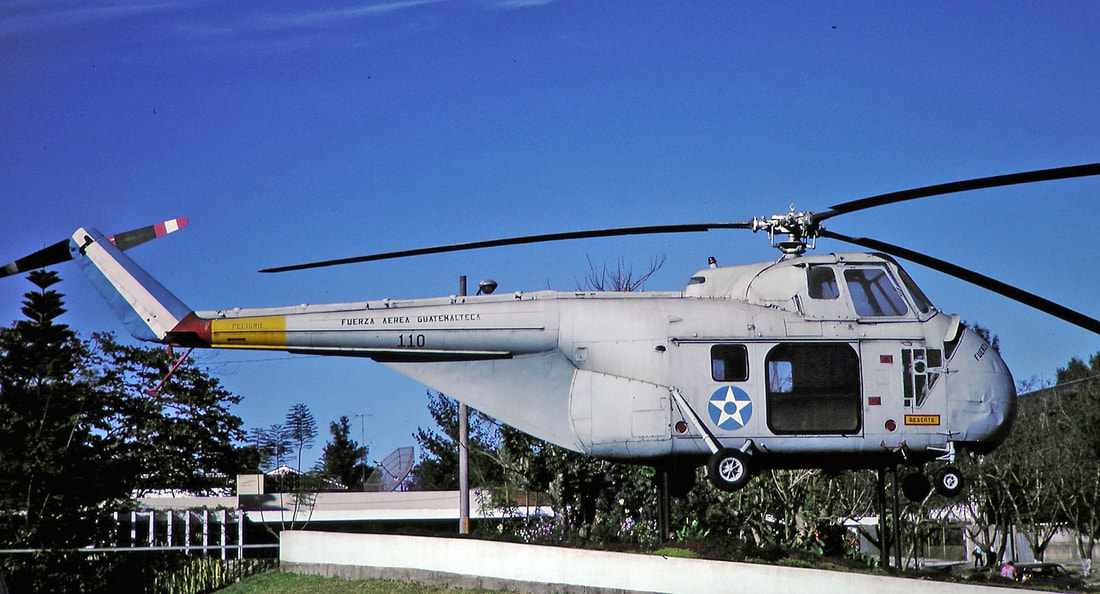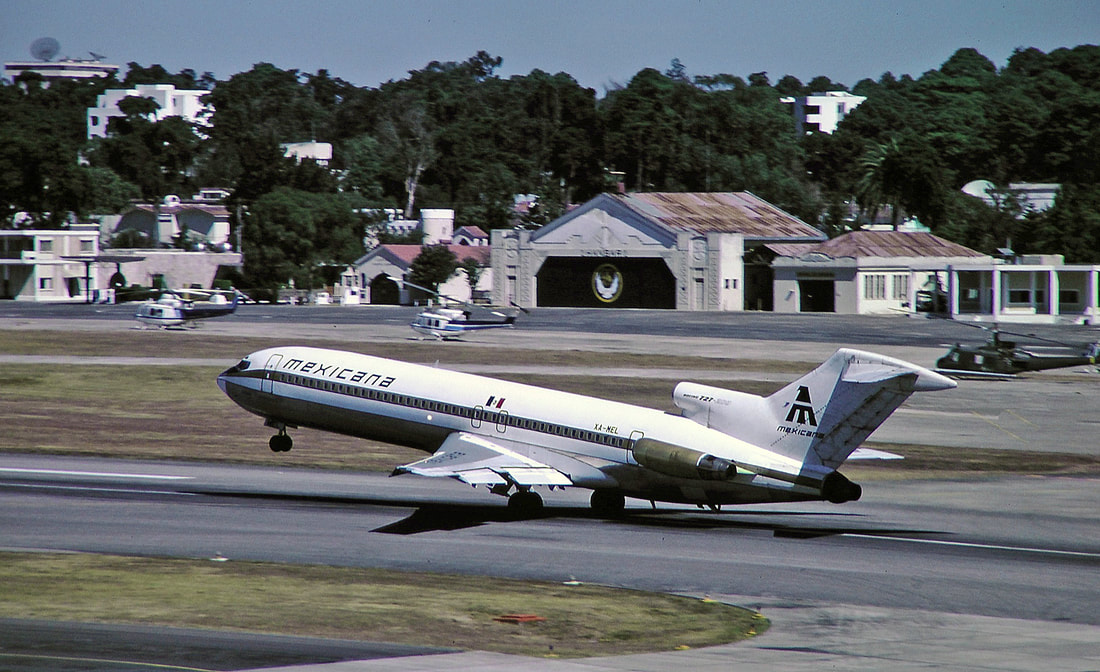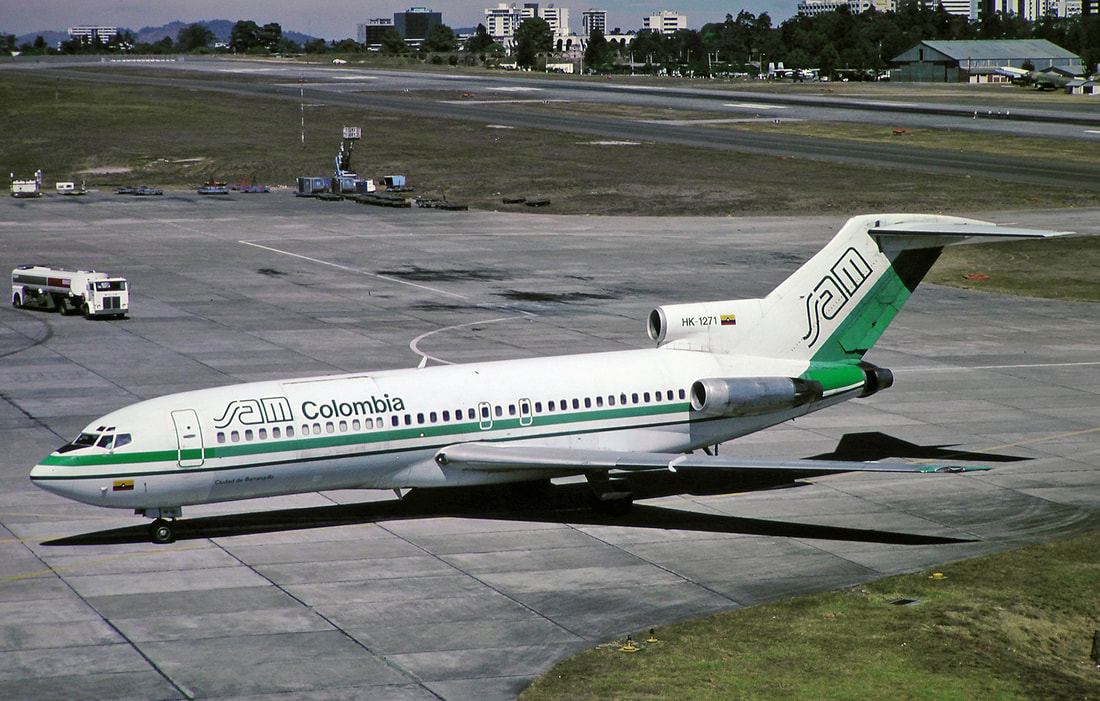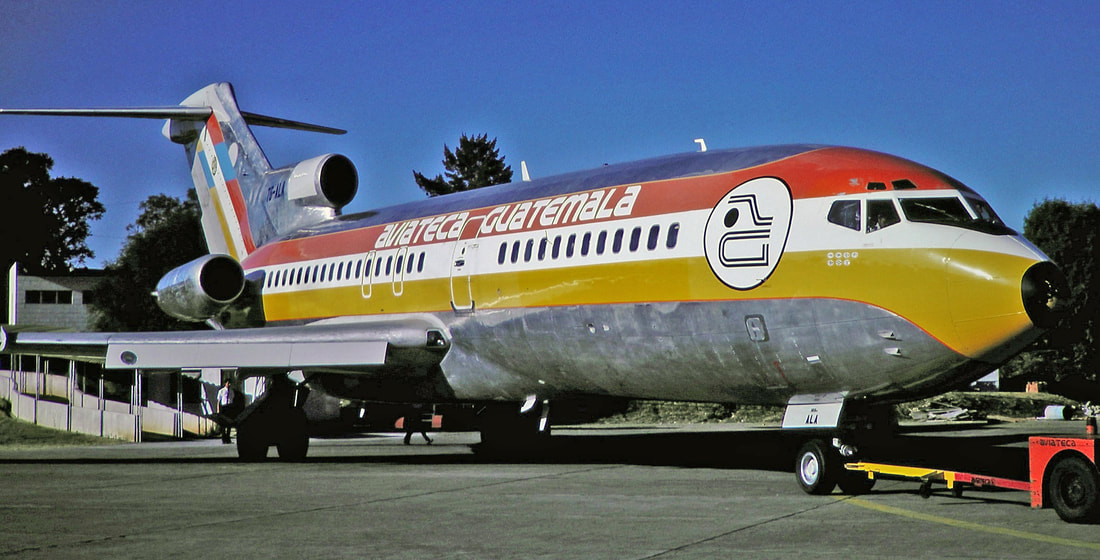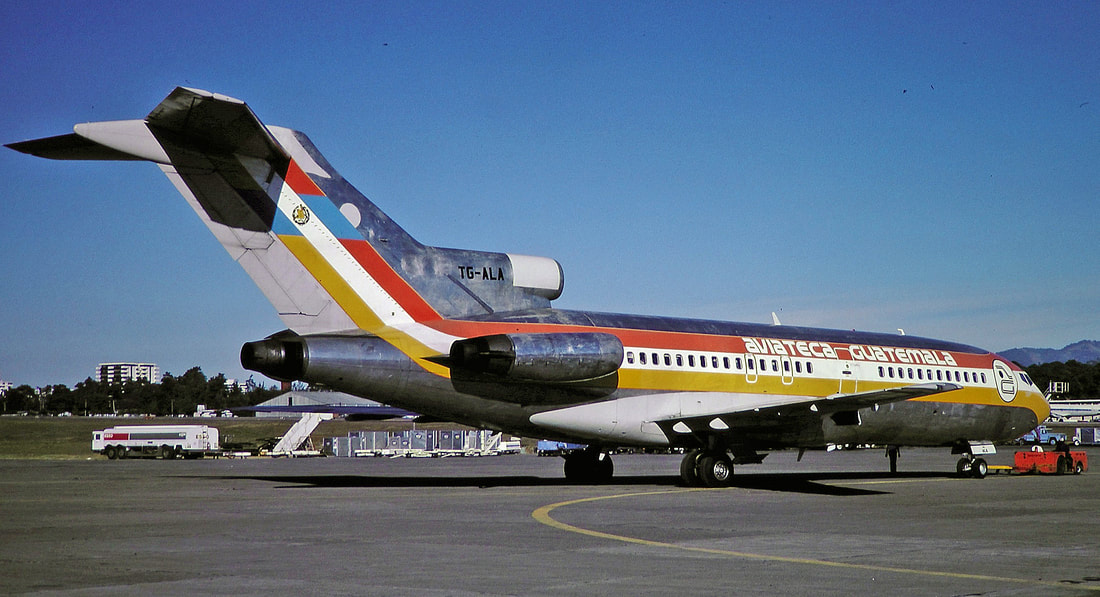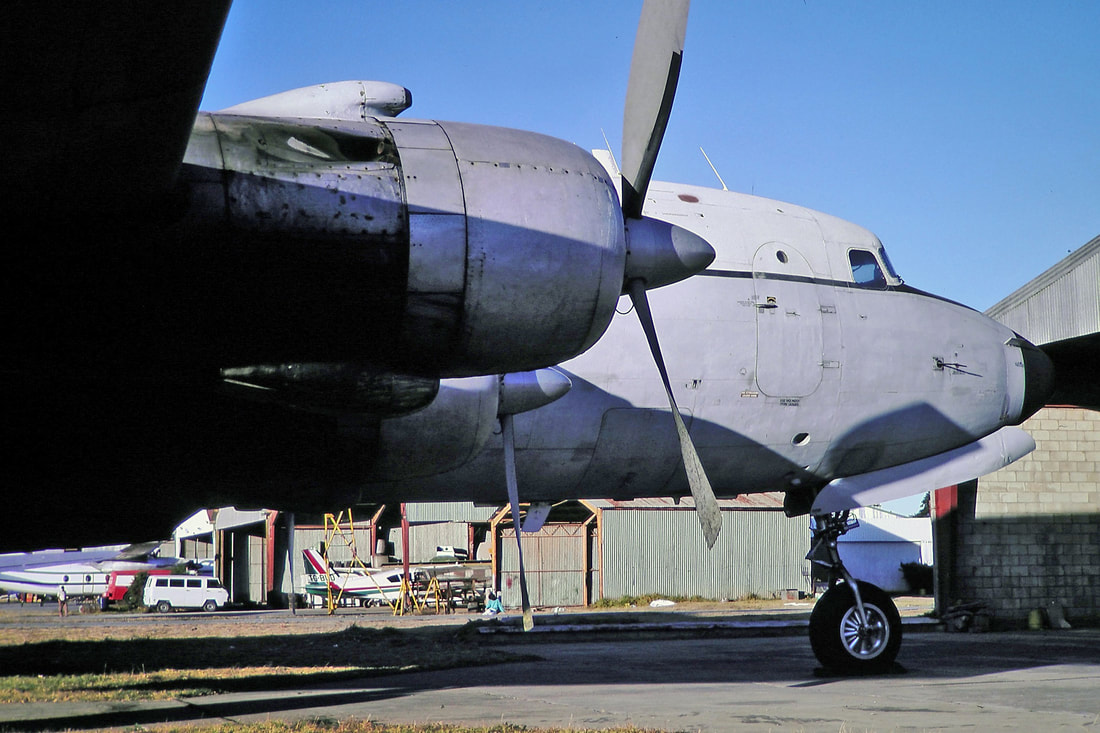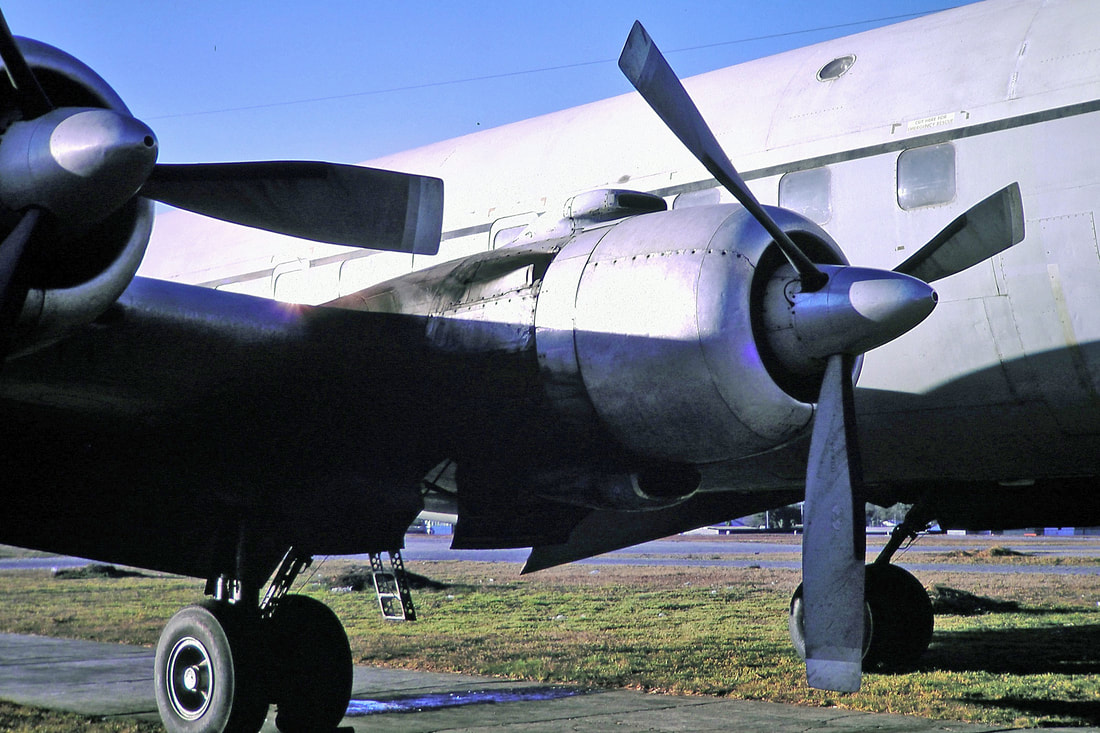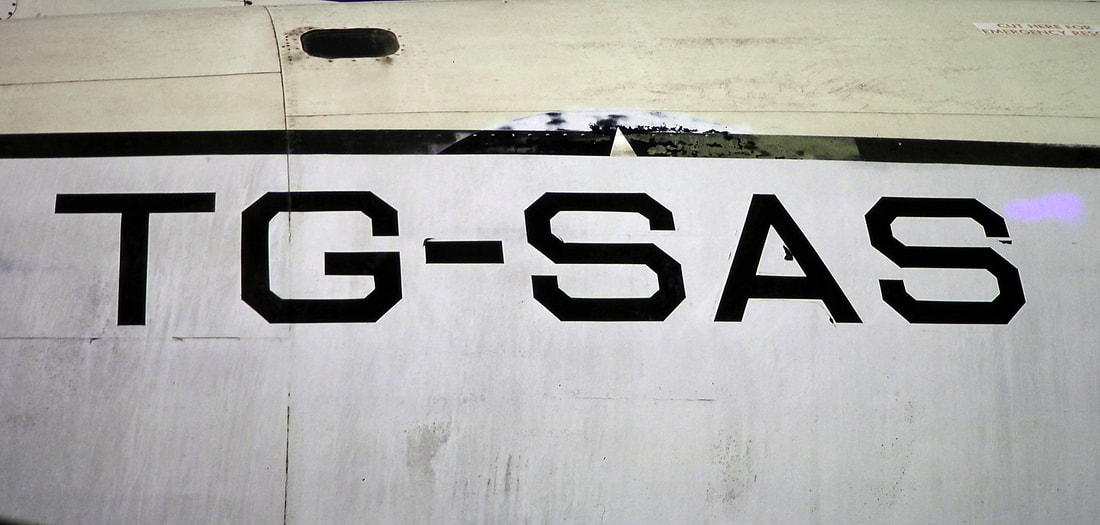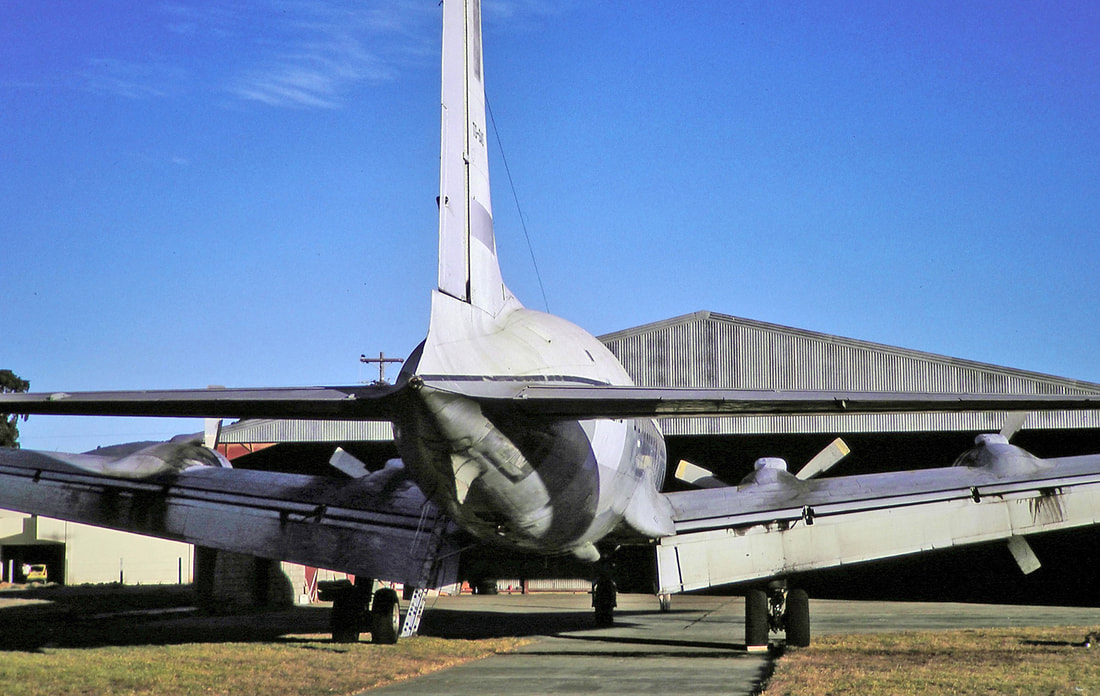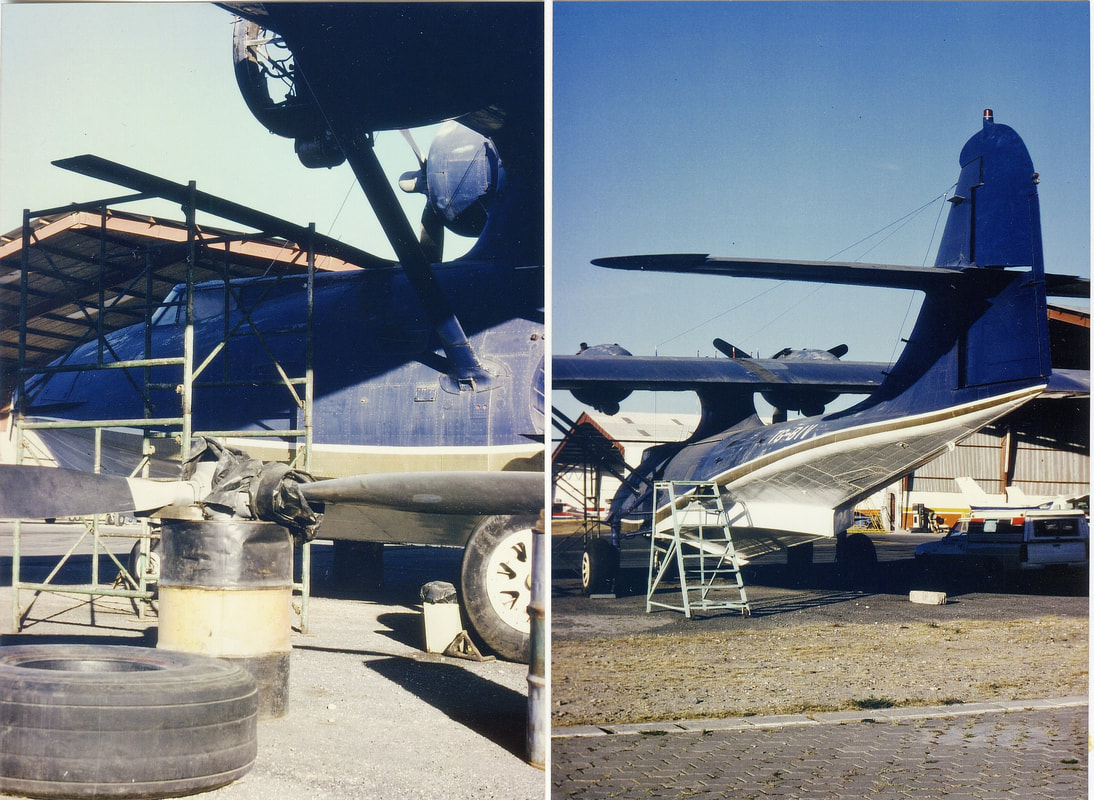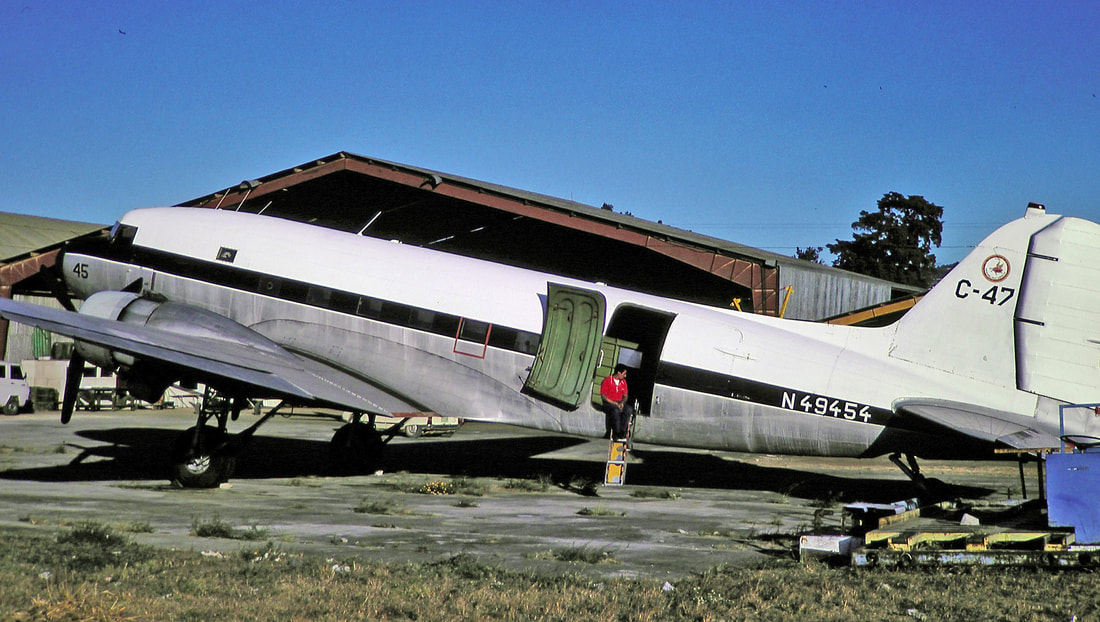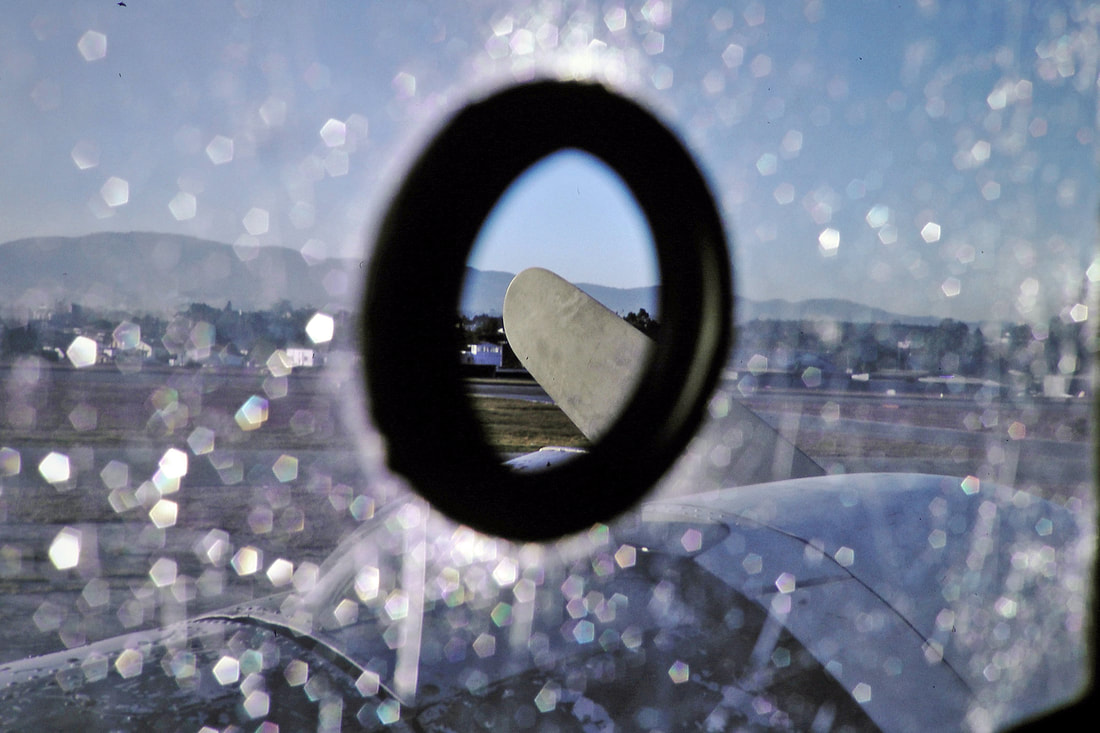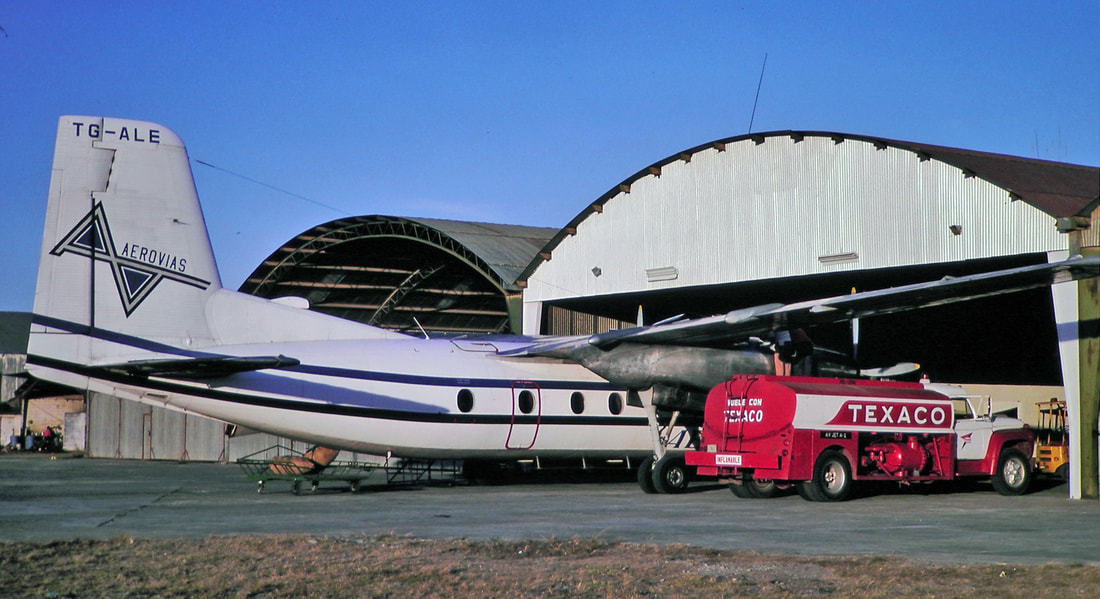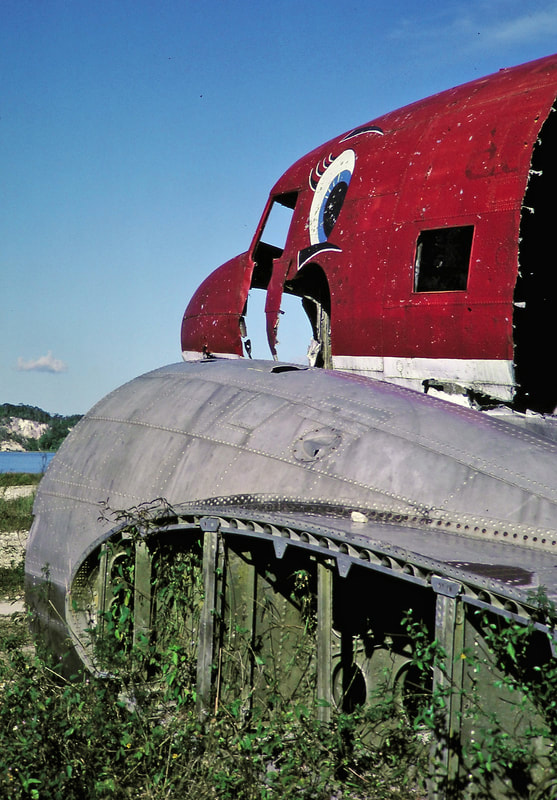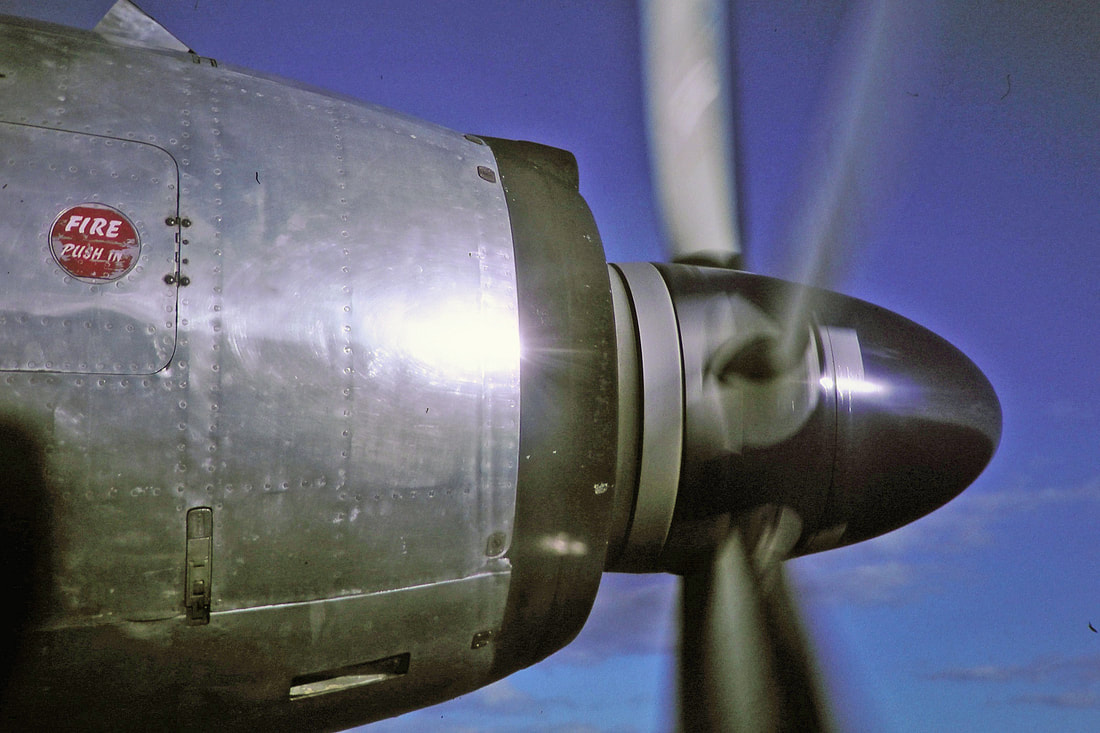Guatamala, January 1987
by Jan Koppen
In January 1987, my beloved girlfriend and I backpacked through Guatemala and its neighboring countries. As an aviation enthusiast, I took the opportunity to visit some aviation hotspots in the country.
Looks like a Museum ramp!. Crystal clear image on a gorgeous day in January 1987.
Opposite Guatemala City-La Aurora airport main terminal is the Fuerza Aerea Guatemalteca Air Base.
Gate guard for "La Aurora" Air Force Base on a lazy Sunday afternoon.
North American P-51D '336' warms her natural metal finish in the strong Guatemaltecan sunshine.
Fuerza Aerea Guatemalteca Sikorsky HU-19B Chicasaw. This preserved example is mounted on a plinth opposite the military base.
With a midday temperature of 40 degrees centigrade, Mexicana Boeing 727-286 XA-MEL is seen here landing at La Aurora on January 31, 1987.
Mexicana Boeing 727-264 XA-MEL is seen here at Gautemala-La Aurora shortly after arriving on a scheduled flight from Mexico City.
Boeing 727-286 XA-MEL was one of many -727's operated by Mexicana. Delivered in March 1981, she served the airline till 2005 when she was transferred to the Mexican Federal Police.
Another very efficient turn-round for this Mexicana Boeing 727-286.
This Mexican Boeing 727, in her inimitable style, blasts into the Guatemalan sky.
Sociedad Aeronáutica de Medellín (SAM Colombia) Boeing 727-24C HK-1271.
In the background; - Three FAG C-47's and FAG F-27-400 '1467'. The Fokker was a well-known airframe for me. During the 70's and early 80's she worked for KLM Cityhopper at my home-base Amsterdam-Schiphol.
HK-1271 is a 727 which has spent nearly all of its working life based in Colombia. Delivered in July 1967 to Continental as N2471, this Golden Jet was traded-in already after about a year of service. She was prepared for sale to Varig, but the deal was cancelled and she went to Avianca instead. For brief spells she was leased to SAM Colombia and in January 1994 she was sold to Lineas Aereas Suramericanas, with whom she still flies as a freighter.
Note; - The DC-6 in the background is Fuerza Aerea Guatemalteca DC-6B TG-WOP. She was a familiar visitor to Miami in the early 80's.
A classic image of a Boeing 727-24C in its original combi configuration, photographed taxying at Guatemala-La Aurora in January 1987.
28 years later and HK-1271 is still operational. Bogota-El Dorado, April 2015.
Aviateca Guatemala Boeing 727-173C TG-AYA is a former World Airways ship. She was delivered to the US company in 1967. In 1979 she was leased to Aviateca and Novermber she changed hands once more. UPS became the new owner. After faithful service with the giant package hauler, she was scrapped at Roswell during 2008.
Maintenance is carried out in the open as a matter of routine – hangarage is a luxury most Central American operators could not or didn’t need.
|
When prototype 727 -E-1 made its maiden flight on February 09, 1963, one of the more unexpected phenomena experienced was a series of compressor stalls in the center engine. The problem was traced to turbulent airflow caused by the oval shape of the intake in the tail-mounted number two engine. Boeing decided to stick with the original external design which remains a distinctive feature of the shorter-100 series. The turbulent flow characteristics and the engine surges, were cured by lining the inside of the large snake-like ‘S-duct’ which feeds air to the engine, with vortex generators (VGs). These are tiny projections more frequently seen on the upper surfaces of wings and in this case, the skin of the vertical tail. Each projection juts out through the slower moving air just above it. The VG causes the faster airstream to swirl into the slower one, so re-energizing the flow and helping it to sick more smoothly to the surface.
|
Close-up of the vertical stabilizer of the 727. The small vanes are vortex generators, which delay airflow separation and improve the effectiveness of the stabilizer and rudder.
|
During 1989 AVIATECA was privatized and later joined the TACA alliances of Central American airlines. It was then fully merged into TACA during 1999 and which was strategically merged into AVIANCA from 2009.
Here Pan Am Boeing 727-235 N4746 noses up to the gate at La Aurora, after a flight from Miami, during the last day of January 1987.
Almost 19 years old at the time this photograph was taken, N4746 had already seen 12 years of service with National Airlines when the carrier merged with Pan Am in 1980. She was withdrawn from use at Miami in 1991 when Pan Am ceased operating and scrapped at Miami in 1993.
The weather-beaten nose of a veteran Pan Am 727-235 at the gate at Guatemala-La Aurora during a warm afternoon in January 1987.
The long fuselage of Pan Am Boeing 727-235 reflects the Guatemaltecan afternoon light as it is replenished with stores for its return flight from Guatemala to Miami in January 1987.
The bright colors of Aviateca Guatemala Boeing 727-25C TG-ALA caught by the camera on a busy sun-drenched day at Guatemala City.
This particular aircraft first flew from Boeing’s Renton production site on January 12, 1967 and was delivered to Eastern Airlines some days later as N8155G. In 1979 her career with Eastern was over and she was sold to International Air Leases Inc., who in their turn leased the 727 to Aviateca Guatemala. Christianed 'Lanquin' the 727 worked for the Guatemaltecan airline for 10 years. She was sold to United Parcel Service as N937UP in December 1989. During the years she was re-engined with TAY 651-54 turbofan engines. In 1994 she withdrawn from service and stored at Roswell, New Mexico, USA. It is believed that she was scrapped by 2003.
Aviateca Guatemala Boeing 727-25C TG-ALA on push back at La Aurora, January 31, 1987.
Pan Am Airbus A300B4 N212PA is captured by the camera accelerating through 170 kts as it climbs out of La Aurora in bright sunshine. After 30 years of faithful service with several airlines her service life was over and she was stored at Leipzig, Germany for part-out & scrap in 2012.
Three thousand pounds of hydraulic pressure have been used to retract the undercarriage and aerodynamically clean-up the aircraft as it accelerates towards a climb-out speed.
Lineas Aereas Mayas C-118A TG-SAS.
Beautiful shape even in grey drab this once pristine preserved example of the most elegant airliner built, sadly shows advanced signs of decay.
She's hanging on by her teeth , but she stayed 'lucky' for many more years, both in the US and Africa.
If R-2800s could burn kerosene instead of avgas, they’d probably go on forever!
Evening sunlight glints off the rudder of Douglas C-118A, TG-SAS, at Guatemala-La Aurora during the last day of January 1987.
|
This C-118A started life as 51-3826 with the USAF when she was delivered in October 1952. Her life in the military continued until August 1975 when she was transferred to the US Department of Agriculture as N203GB, a registration that she carried until 1982 when she headed to Guatemala and began seven years in South America as TG-SAS with Lineas Aereas Mayas. In December 1989 the aircraft was purchased by Rubi Inc., registered as N54G and ferried to Miami, where she was stationed until December 1996. She was purchased by Service Air of South-Africa as 9Q-CGZ and flown to her present location at Rand airfield, South-Africa. Unforenately she soon was withdrawn from servicen and stored at Rand. After such a long time on the ground it seems unlikely that this wonderful airplane will ever fly again.
|
This aircraft is now a part of the exhibition in the South African Airways Museum at Rand Airport.
17 years later we were re-united at Rand airfield, South-Africa.
At La Aurora, I came across a Catalina which had been in store for five years. Although this aircraft, TG-BIV, had lost her starboard engine, she was still in very good condition and painted in a blue and cold color scheme.
She was owned by an American-Cuban named Meldy Fernandez of Miami. The Cat made one test flight in November 1986. During the course of which she blew her starboard engine and had remained grounded since. This particular Catalina had been a movie-star, as she played a role in the movie; - 'Tora, Tora, Tora' which was released in 1969. Next to this she also participated in 'The Bay of Pigs' landing in the early 60's.
She was owned by an American-Cuban named Meldy Fernandez of Miami. The Cat made one test flight in November 1986. During the course of which she blew her starboard engine and had remained grounded since. This particular Catalina had been a movie-star, as she played a role in the movie; - 'Tora, Tora, Tora' which was released in 1969. Next to this she also participated in 'The Bay of Pigs' landing in the early 60's.
During the years this Catalina was repaired and flown, with registration N5404J, to Fort Lauderdale for major overhaul. On January 15, 1994 N5404J, which had been acquired by the Catalina Company was to be ferried from the U.S. to the owners in New Zealand. The crew flew from Los Angeles International to Hilo, Hawaii. The next leg was from Hilo to Papeete/Taihiti the next day. En route, no. 1 engine problems forced the crew to divert to Christmas Island. The engine failed completely somewhat later. With a maximum load of fuel on board for the long distance flight, it was impossible for the aircraft to maintain altitude. Weighed down by its remaining 1000 gallons of fuel, the Catalina progressively lost height until a forced landing had to be carried out mid-Pacific. The airplane sank four hours later. All 7 crew members were rescued eight hours later.
A snug fit in a marooned corner of Guatemala-La Aurora maintenance area in January 1987, this Catalina had hopes of resurrection.
Fortune smiled on the on the Big Cat and after several years in open storage the she was flown away by a brave aircrew for a new life in the USA.
Special thanks to Michael S. Prophet for scanning these slides.
Aero Express DC-3C-S4C4G N49454 is seen here at Guatemala City-La Aurora in the last week of January 1987.
Five weeks later she was shot-down in Hondurian airspace.
Five weeks later she was shot-down in Hondurian airspace.
This DC-3 was shot down by a Honduran Air Force Dassault Mystère fighter plane after the pilot failed to identify himself. The aircraft used the fake callsign HK-303. Officials said that they suspected the plane was involved in smuggling narcotics. The airplane had departed Guatemala City, March 09, 1987 at 09:39LT, on a test flight to El Estor, Guatemala. After takeoff the crew radioed that they wanted to return to Guatemala City. That was the last contact with the flight.
The following is the press release by Associated Press Tegucigalpa on March 11, 1987;- An unidentified plane was shot down by the Honduran Air Force after it entered Honduran airspace apparently from neighboring Nicaragua, the armed forces said yesterday.
In Washington, U.S. Government sources said the plane may have been involved in drug smuggling. It was said the plane was shot down at 11:30 p.m. on Monday, about 150 kilometers west of Tegucigalpa. The crew of the plane did not identify itself. Because of that, with all peaceful procedures exhausted, the air force carried out warning shots and then shot down the plane.
An Honduran Colonel said the plane entered Honduras from the southeast, passing over El Paraiso province bordering Nicaragua and over an area south of Tegucigalpa. It was shot down in Copan province near the Guatemalan border.
Tensions are high along the border between Honduras and Nicaragua because U.S.-supported Nicaraguan rebels, or contras, operate from bases in southern Honduras. In Washington, a Pentagon source said the plane was "not one of ours". A source said it would not be unusual for such an aircraft to be used by drug runners. We have our suspicions that this might have involved a drug operation.
In Washington, U.S. Government sources said the plane may have been involved in drug smuggling. It was said the plane was shot down at 11:30 p.m. on Monday, about 150 kilometers west of Tegucigalpa. The crew of the plane did not identify itself. Because of that, with all peaceful procedures exhausted, the air force carried out warning shots and then shot down the plane.
An Honduran Colonel said the plane entered Honduras from the southeast, passing over El Paraiso province bordering Nicaragua and over an area south of Tegucigalpa. It was shot down in Copan province near the Guatemalan border.
Tensions are high along the border between Honduras and Nicaragua because U.S.-supported Nicaraguan rebels, or contras, operate from bases in southern Honduras. In Washington, a Pentagon source said the plane was "not one of ours". A source said it would not be unusual for such an aircraft to be used by drug runners. We have our suspicions that this might have involved a drug operation.
During my visit to La Aurora a new factory-type conveyor belt, to discharge cargo quickly by paradropping, was being installed. Local mechanics were not too co-operative in answering my questions about why and for whom they were installing the equipment. The reason became clear later, when this DC-3 was shot down over Honduras five weeks later.
Room with a view! - taken from cockpit of ill-fated DC-3 N49454.
Aerovias Handley Page HPR-7 Herald 401 TG-ALE, caught in the evening light while being re-fueled in the company hangar.
Once a common sight around European airports, this 1964 build aircraft, flew for British Air Ferries in the early 80's, after she was aquired by the British from the Royal Malaysian Air Force. Somewhere during 1988 she got damaged and was stripped for parts. During 1998 she was seen at La Aurora with all the recyclable components remove.
During our tour of Central America we also travelled ofcouse to Tikal, which can be reached from a place called Flores. Near Flores there's a small airport and FAG Airbase. Outside of the pitoresque terminal we found two derelict DC-3 of the sub-governmental organisation Fomento y Desarrollo del Petén (FYDEP).
The National Petén Economic Development and Development Company (Fydep), created half a century ago and disappeared in 1986, achieved its mission; - In 2016, the Peten era population was 26 times larger than in 1964. However, although it was a policy of State, today the disappearance of some penitentiary communities is promoted, a contradiction with high human costs.
It looked like these carcasses were in a children's playground next to the lake Petén Itzá.
This is high level of ‘DC-3ocide’.
Beneath their cheap coat of paint, faded Aviateca colors were visible.
Lake Petén Itzá.
TAPSA Embraer 110 TG-TPA.
On January 11, 1996, Transportes Aereos Profesionales S.A. Embraer 110, TG-TPA, crashed while approaching Flores - Santa Elena airport. The Bandeirante collided with a mountain at 900 feet in bad weather.
Aerovias Handley Page HPR-7 Herald 401 TG-ALE.
In 1987 Aerovias maintained a daily scheduled passenger service linking Flores with Guatemala City and we were her passengers.
Aerovias Handley Page HPR-7 Herald 401 TG-ALE seen here on a sweltering Flores tarmac some day in the last week of January 1987.
The Herald Series 400 was specially developed in 1964 as a tactical transport built for the Royal Malaysian Air Force, with a strengthened cabin floor.
Fuerza Aerea Guatemalteca C-47 '520' at Flores - Santa Elena Air Force base. Taken from the Herald.
Fuerza Aerea Guatemalteca C-47 '575' at Flores-Santa Elena Air Force base. Her bright uniform gleaming in the strong sunlight.
Sun-glasses protect the eyes of this Aerovias Handley Page HPR-7 Herald 401 captain against the white glare during our flight from Flores to Guatemala City.
A take-off and/or landing checklist is also a handy sun visor.
Off it was on a gorgeous bright sunny Saturday, end of January 1987, sailing down to Guatemala in merely one hour with the music of a pair of well-tuned Rolls Royce Darts filling the sky.
Our Herald 401, caught in the evening light after our arrival at La Aurora.
- The End -



